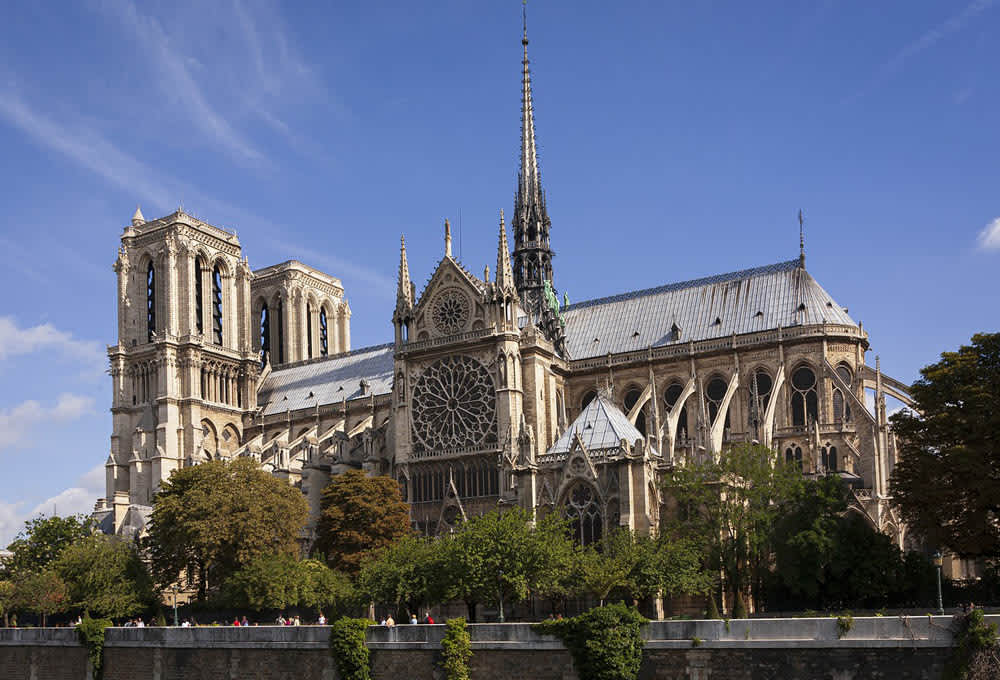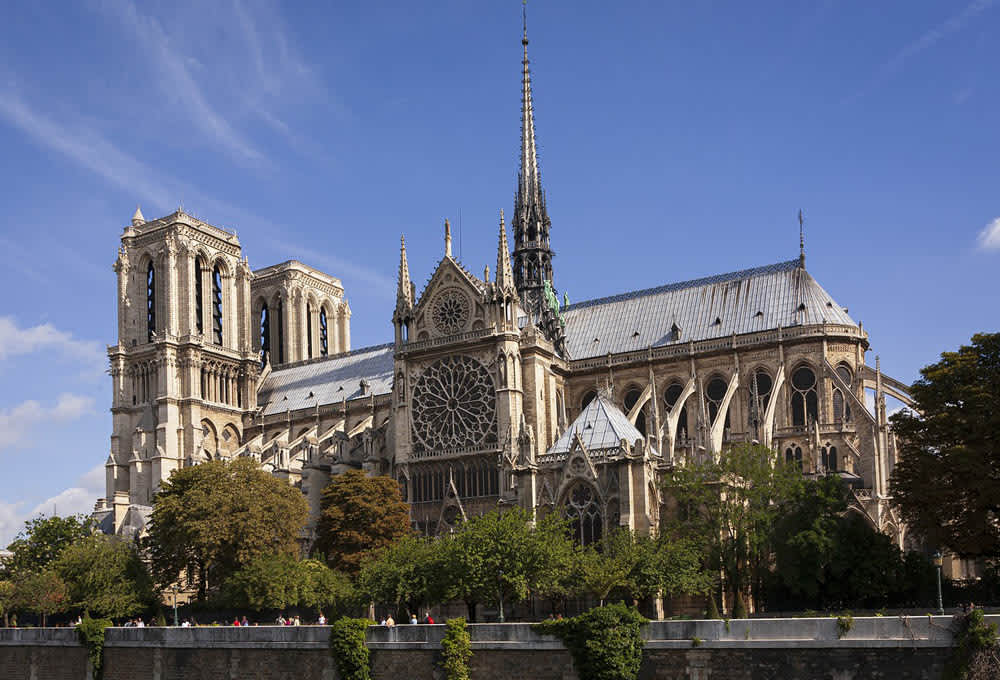On December 7, 2024, the iconic Notre Dame Cathedral in Paris officially reopened its doors to the public, nearly five years after a devastating fire reduced parts of the historic monument to ashes. The event was marked by a symbolic ceremony led by the Archbishop of Paris, Laurent Ulrich, and attended by key international figures, including French President Emmanuel Macron, U.S. President-elect Donald Trump, and Ukrainian President Volodymyr Zelensky.
This grand reopening is a testament to human resilience, perseverance, and the power of international cooperation. The world watched as the once-damaged cathedral once again stood tall, ready to welcome worshippers, tourists, and art enthusiasts from across the globe.
A Symbolic Rebirth of a Historic Monument
Notre Dame, a masterpiece of Gothic architecture that has witnessed over 850 years of history, reopened with a ceremony steeped in tradition. As per custom, Archbishop Laurent Ulrich knocked three times on the cathedral’s front doors using a ceremonial staff. This gesture symbolized the “reawakening” of Notre Dame as a place of worship and cultural heritage. (apnews.com)
Accompanying the grand opening were beautiful choral performances and a lighting display that illuminated the intricate details of the cathedral’s architecture. One of the most moving moments of the evening was the reactivation of the famous Notre Dame organ, which had survived the fire but required extensive restoration.

Global Leaders in Attendance
The reopening ceremony was attended by approximately 1,500 dignitaries, including high-profile international leaders. French President Emmanuel Macron delivered a heartfelt speech in which he described the event as a “moment of unity for France.” He praised the hard work and dedication of the thousands of laborers, engineers, and artisans who made the reconstruction possible.
Other notable attendees included U.S. President-elect Donald Trump, who described Notre Dame as “a universal symbol of faith and strength,” and Ukrainian President Volodymyr Zelensky, whose presence underscored the broader theme of resilience in the face of adversity.
The Restoration Process: A “Work of the Century”
Restoring Notre Dame was no small feat. The project, often referred to as a “work of the century,” involved over 2,000 workers and 250 specialized companies from across Europe. The restoration efforts had a total cost of approximately €850 million.
The mission was not only to restore the damaged parts of the cathedral but also to ensure that its original design and authenticity were preserved. Key components like the roof, the iconic spire, and the intricate stained-glass windows required meticulous attention to detail. Many of the materials used in the restoration were sourced from the same regions that supplied the cathedral’s original construction in the 12th century.
One of the most ambitious aspects of the project was reconstructing the iconic spire, which had collapsed during the 2019 fire. Architects and engineers faced the challenge of ensuring that the new spire stayed true to the original design by architect Eugène Viollet-le-Duc while incorporating modern construction techniques to prevent future damage.
Despite facing challenges like supply chain issues, labor strikes, and inclement weather, the project was completed within the five-year timeline set by President Macron. The French leader had promised to restore Notre Dame before the 2024 Paris Olympics, and his promise was fulfilled. (cadenaser.com)
Impact on Paris and Global Tourism
Notre Dame has long been a focal point of Parisian life, drawing millions of tourists each year. Its reopening represents more than the return of a landmark; it signifies hope, cultural pride, and spiritual renewal. Local businesses, particularly those dependent on tourism, are expected to benefit significantly from the influx of visitors eager to see the newly restored cathedral.
Tourism officials have already noted an increase in bookings for 2025, as travelers from around the world plan visits to the French capital. As one of the most visited sites in Europe, Notre Dame’s return is set to inject vitality into the French tourism sector, which has faced challenges in recent years due to economic uncertainty and geopolitical unrest.
A Moment of Reflection and Unity
For many, the fire that engulfed Notre Dame in April 2019 symbolized the fragility of cultural heritage. The sight of flames consuming the cathedral’s roof shocked the world and prompted millions in donations from individuals, companies, and international organizations. The collective effort to rebuild it stands as a reminder of how, in moments of crisis, humanity can come together for a shared purpose.
The reopening of Notre Dame comes at a time when France is experiencing political and social challenges. For French citizens, the moment offered a rare opportunity for unity and pride. President Macron described it as a “beacon of hope for the French people and the world”, emphasizing that the return of Notre Dame represents strength, resilience, and the enduring power of faith.
What’s Next for Notre Dame?
Although the cathedral has officially reopened, there is still work to be done. Experts are continuing to restore certain elements of the cathedral, including smaller artistic details that were not essential for the grand reopening. Visitors will have access to guided tours, worship services, and special cultural events.
Notre Dame will once again serve as a working cathedral, hosting daily religious services while also accommodating tourists. For Parisians, it remains a spiritual haven in the heart of the city. The cathedral’s bells will ring out during important celebrations and moments of reflection, much like they have for the past eight centuries.
The reopening of Notre Dame Cathedral is much more than the return of a historical monument. It is a symbol of resilience, unity, and the collective power of humanity. The combined efforts of thousands of people from around the world ensured that this cultural treasure was restored in record time. The presence of global leaders at the ceremony underscored the international significance of this achievement.
Notre Dame’s reopening reminds us that even in the face of tragedy, hope can prevail. The cathedral, once reduced to ashes, now stands stronger than ever—ready to welcome the world once again.
